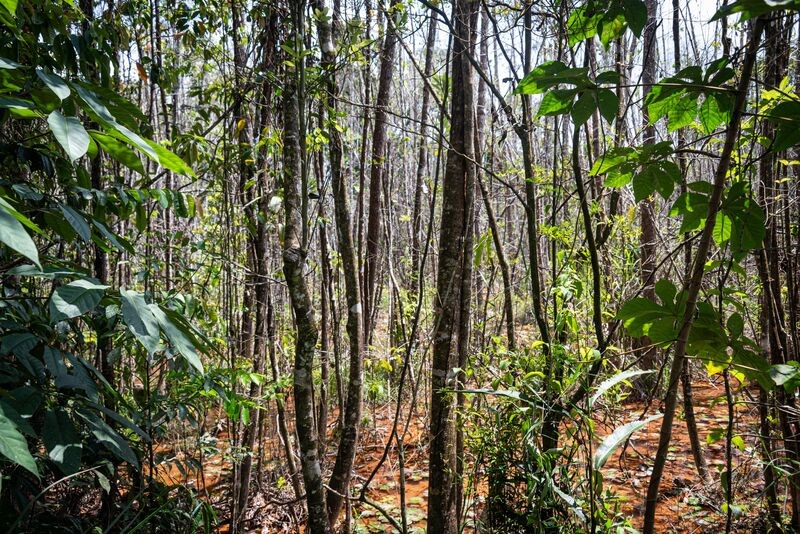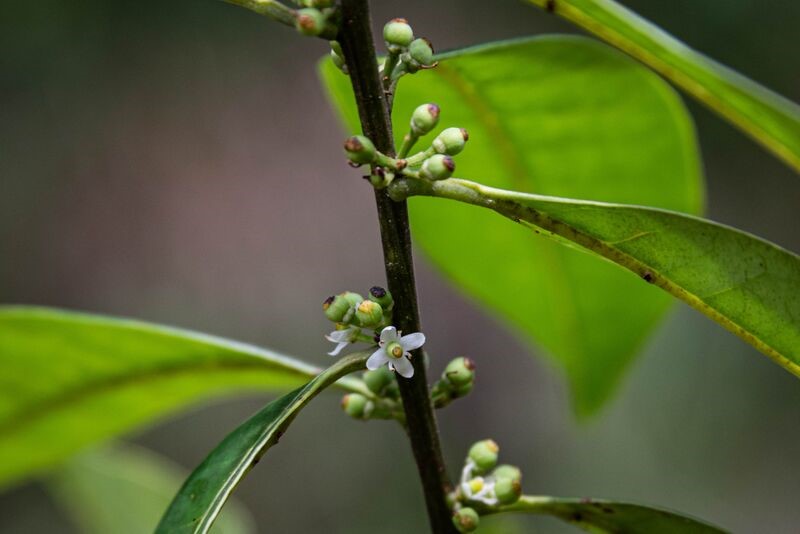A holly tree that had been lost to botanists for almost two centuries has been found after a six-day search operation in Brazil. The four trees that were rediscovered are thought to be the only ones left of this species, so that fateful day back in March of this year was an emotional one for all involved.
“The moment when we found Ilex sapiiformis, it seemed that the world had stopped turning its gears,” said project assistant Juliana Alencar in a statement sent to IFLScience. “Nature surprises us. Finding a species that hasn’t been heard of in nearly two centuries doesn’t happen every day. It was an incredible moment, and the emotion of it was felt throughout the entire team.”
The only previous confirmed sighting of I. sapiiformis, more commonly known as the Pernambuco holly, was also the first. In 1838, naturalist George Gardner collected a sample on one of his expeditions, and the species was officially described 23 years later by Siegfried Reissek.
In Gardner’s day, Brazil’s Atlantic tropical forest – home to the Pernambuco holly – was far more extensive than it is now. Conservation charity Re:wild estimates that 85 percent of this once-expansive woodland has now been lost to deforestation, making way for cattle farming and sugar cane plantations.
In fact, Igarassu, where the elusive trees have now been rediscovered, is a predominantly urban area, home to nearly 6 million people, making the find all the more surprising.

The area where the Pernambuco holly was rediscovered was once part of a vast, dense forest.
Image credit: Fred Jordão
“We don’t often think of plants as being lost to science, because they don’t move like animals, but they are every bit as integral to the ecosystems they are native to,” said Re:wild’s lost species program officer Christina Biggs. “Even if a plant hasn’t had a confirmed sighting in 186 years, it could still be hanging on in the last vestiges of the wild somewhere, and this tree is a perfect example of why it’s important to keep looking.”
A lot of preparation went into the search for the lost trees, which can reach heights of around 8-12 meters (26-40 feet). Project leader Gustavo Martinelli and the team consulted the records of herbariums, botanical gardens, and museums, and scanned through over 12,000 digital records in their search for a sample of the tree.
When that proved unsuccessful, they turned to as-yet undigitized collections across Brazil – and struck gold. A sample of Pernambuco holly from 2007 helped direct the searchers towards the city of Recife, where they looked for almost a week before spotting the plants’ distinctive flowers at last.

The tiny white flowers were spotted by a member of the expedition team, Lenilson Barbosa dos Santos.
Image credit: Fred Jordão
“We were all anxious to find the plant,” said team member Milton Groppo. “And it was exciting when we found the first individual of Ilex sapiiformis, thanks to the keen eyes of Mr. Lenilson [Barbosa dos Santos, a parabotanist], who was able to find some white flowers in a tree alongside the dirt road. It was like finding a long-lost and long-awaited relative that you only know by old portraits.”
The find checks off one of the top 25 species on a list compiled by Re:wild for their Search for Lost Species program. Working in collaboration with global partners, the program has now seen the rediscovery of nine animals and plants since 2017.
The team is still hoping that the four trees they found are not the last in the wild, and there’s work to be done to preserve their forest home as much as possible and establish a captive breeding program for the species.
It’s been a long road, but this certainly isn’t the end of the story for the Pernambuco holly.
Source Link: Holly Tree Lost For Nearly Two Centuries Rediscovered In Forests Of Brazil